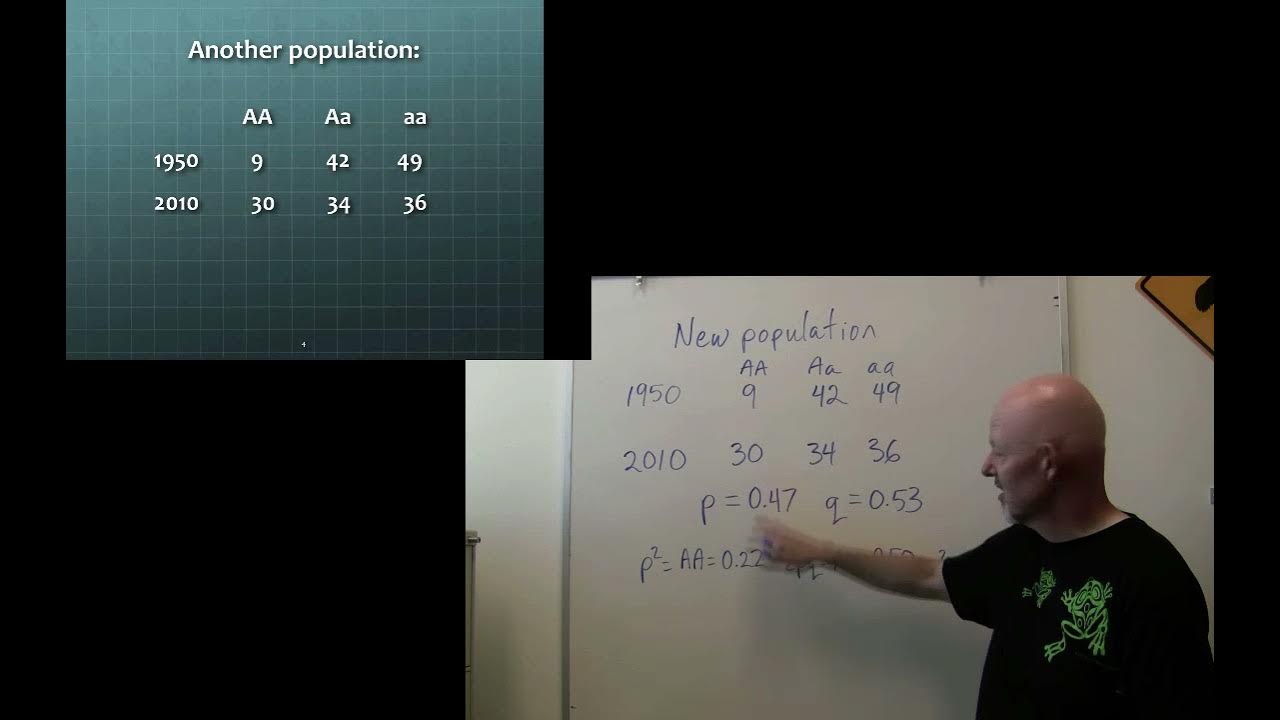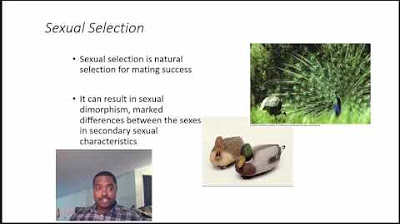Types of Natural Selection
Summary
TLDRThis video explains the concept of natural selection and its relationship with the Hardy-Weinberg equilibrium. When equilibrium is disrupted by environmental pressures such as overpopulation, resource competition, changing environments, or predators, evolution occurs. The video explores three types of natural selection: directional, stabilizing, and disruptive. Examples, like the peppered moth during the Industrial Revolution and robin's egg clutch sizes, help illustrate these concepts. Additionally, it highlights how different traits provide survival advantages depending on the environment and species-specific interactions.
Takeaways
- 😀 Natural selection occurs when environmental pressures disrupt Hardy-Weinberg equilibrium, leading to evolution in a population.
- 😀 Natural selection is a gradual process by which heritable traits become more or less common due to environmental pressures.
- 😀 Examples of environmental pressures that drive natural selection include overpopulation, resource competition, changing environments, and predation.
- 😀 Directional selection favors individuals with extreme traits, leading to a shift in the population toward those traits.
- 😀 An example of directional selection is the peppered moth population in England, where darker moths had an advantage during the industrial revolution due to better camouflage.
- 😀 Stabilizing selection favors individuals with average traits, as they tend to have the highest fitness in stable environments.
- 😀 An example of stabilizing selection is the optimal clutch size of four eggs in robins, balancing the need for offspring survival and resources.
- 😀 Disruptive selection favors individuals with extreme traits at both ends of the spectrum, rather than those with average traits.
- 😀 An example of disruptive selection is seen in Chinook salmon, where large males have fighting advantages and small males can sneak fertilization, while medium-sized males are less successful.
- 😀 Hardy-Weinberg equilibrium is a theoretical state where no evolution occurs, and any disruption to this equilibrium leads to the occurrence of natural selection and evolution.
Q & A
What is Hardy-Weinberg equilibrium?
-Hardy-Weinberg equilibrium is a concept in population genetics that describes a state where allele frequencies in a population remain constant from generation to generation, provided that no evolutionary pressures are acting on the population.
How does evolution occur when Hardy-Weinberg equilibrium is broken?
-When Hardy-Weinberg equilibrium is disrupted, evolutionary forces such as natural selection, genetic drift, gene flow, or mutation come into play, causing allele frequencies in the population to change over time.
What is natural selection?
-Natural selection is the gradual process by which certain heritable traits become more or less common in a population due to environmental pressures. Traits that offer a survival or reproductive advantage tend to increase in frequency.
What are examples of environmental pressures that can break Hardy-Weinberg equilibrium?
-Examples of environmental pressures include overpopulation, resource competition, changing environments, and the presence of predators, which all lead to selection pressures that can drive evolution in a population.
What is directional selection?
-Directional selection occurs when individuals with an extreme form of a trait have higher fitness than individuals with the average trait. Over time, the population shifts toward the extreme trait. An example is the peppered moth in England during the industrial revolution.
How does the example of the peppered moth illustrate directional selection?
-During the industrial revolution, the darker-colored peppered moths had higher survival rates because they were better camouflaged against the soot-covered trees. As a result, the population of darker-colored moths increased, demonstrating directional selection.
What is stabilizing selection?
-Stabilizing selection occurs when individuals with an average form of a trait have the highest fitness, leading to a reduction in genetic variation. An example is the clutch size in robins, where a clutch of four eggs is optimal for survival.
Why is a clutch size of four eggs optimal for robins in stabilizing selection?
-A clutch size of four eggs is ideal because it provides a balance: too few eggs could result in no offspring surviving, while too many eggs would be difficult to feed and sustain. This balance maximizes the survival of the offspring.
What is disruptive selection?
-Disruptive selection occurs when individuals with extreme traits have higher fitness than those with average traits, leading to a population where two distinct forms of the trait are favored. An example is the competition among male Chinook salmon for mating opportunities.
How do large and small male Chinook salmon benefit from disruptive selection?
-In Chinook salmon, large males are advantaged because they can fight for mates, while small males can sneak in and fertilize eggs while the large males are distracted. Medium-sized males are at a disadvantage because they can't successfully fight or sneak past the larger males.
Outlines

Cette section est réservée aux utilisateurs payants. Améliorez votre compte pour accéder à cette section.
Améliorer maintenantMindmap

Cette section est réservée aux utilisateurs payants. Améliorez votre compte pour accéder à cette section.
Améliorer maintenantKeywords

Cette section est réservée aux utilisateurs payants. Améliorez votre compte pour accéder à cette section.
Améliorer maintenantHighlights

Cette section est réservée aux utilisateurs payants. Améliorez votre compte pour accéder à cette section.
Améliorer maintenantTranscripts

Cette section est réservée aux utilisateurs payants. Améliorez votre compte pour accéder à cette section.
Améliorer maintenantVoir Plus de Vidéos Connexes
5.0 / 5 (0 votes)






